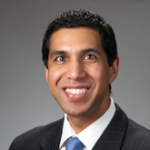Initiatives to keep patients & healthcare workers safe
Patient safety is a fundamental principle of healthcare. The landmark report To Err is Human: Building a Safer Health System, published in 1999 by the Institute of Medicine (IOM), brought attention to this important issue and ushered in a national effort to improve safety in healthcare. While substantial improvements were the result, there’s still much work to be done.
A 2018 study from the Office of Inspector General for the U.S. Department of Health and Human Services showed that 25% of Medicare beneficiaries experienced harm during inpatient hospital stays, and almost half of those incidents were preventable.
In May 2022, the National Steering Committee for Patient Safety’s report Declaration to Advance Patient Safety acknowledged: “The safety of patients and the healthcare workforce is a public health emergency, exacerbated by the worsening national outcome trends during the COVID-19 pandemic.”

“Unfortunately, during the COVID-19 pandemic, we saw an increase in healthcare-associated infections (HAIs), particularly central-line associated infections, catheter associated urinary tract infections and ventilator associated pneumonia,” says John Young, M.D., MBA, Chief Medical Officer of HealthTrust. “These rates continue to be higher than before the pandemic, highlighting the need for hospitals to reevaluate their standard practices regarding patient safety and quality, and refocus efforts to reduce these preventable infections.”
Implementing standardized care
To Err is Human insists that systemwide changes to the health system are needed to improve patient safety. Standardizing equipment, supplies and processes is part of designing a safe health system that recognizes that clinicians are human, with human strengths and weaknesses.

“The whole concept of reducing the variation in care is a strategy to help improve patient outcomes, safety and quality,” says Kimberly Wright, RN, AVP of Clinical Services at HealthTrust. “Patients shouldn’t be treated differently based on where they’re located in the hospital or who their attending physician is. Care should always be guideline directed and evidence based.”
At Cedar Park Regional Medical Center, standardization of care initiatives has reduced opioid use and hospital length of stays. For example, at one time every surgeon had varying preoperative and postoperative orders for their total joint arthroplasty patients, putting pressure on nursing staff who had to follow different protocols for each patient. “This made it difficult from a system standpoint to drive excellence and improve outcomes,” says HealthTrust Physician Advisor

Maneesh Amancharla, M.D., a partner at U.S. Anesthesia Partners and Chief of Anesthesiology & Vice Chief of Staff at Cedar Park Regional Medical Center.
Dr. Amancharla and Cedar Park’s two main orthopedic groups came together to discuss what the evidence supported and what they wanted to achieve. They decided to move preoperative and postoperative control of pain to the anesthesia service so it could be standardized, with all patients receiving the same set of nerve blocks. The anesthesia service also took over multimodal pain management, maximizing non-narcotic approaches and minimizing narcotics, which resulted in improved pain scores and decreased patients’ lengths of stay in the hospital.
“Time and time again, we see an improvement in patient care, decreased hospital length of stays and a reduction in opioid use, which is a national initiative. We’re able to achieve that through standardization of care,” which is a national initiative,” explains Dr. Amancharla.
Engaging physicians in quality improvement
With the publication of its 2001 report, Crossing the Quality Chasm: A New Health System for the 21st Century, IOM continued to call for the redesign of existing healthcare systems. This report focused on quality more broadly, including patient safety as one of the six specific aims it asked healthcare professionals and policymakers to adopt: safety, effectiveness, patient-centeredness, timeliness, efficiency and equity.
To achieve these aims, hospitals and healthcare systems are looking to quality improvement (QI) initiatives. With physicians’ key role as decision-makers, influencers and practitioners of care, it is critical to engage them in QI to enact change.

HealthTrust Physician Advisor Ashley Mays, M.D., is an otolaryngologist at the Cleveland Clinic, Florida, and the quality officer for the hospital’s surgical subspecialties. She recognizes the importance of engaging physicians in the QI process—and the challenges in doing so. She emphasizes the importance of making sure physicians understand the importance of quality improvement and their role in it, as well as the potential benefits they stand to gain by being engaged in the process.
To start, Dr. Mays recommends educating physicians on the meaning of concepts like quality, safety and value, as well as the importance of related metrics. “Quality is not just quality. There are many different parts to it. Safety is not the same as value, and value is not the same as experience,” she explains.
As specialists in their field, physicians are uniquely able to contribute to QI. “A provider understands the nuances of medicine much better than an administrative person does,” says Dr. Mays. “We should be the ringleaders in following our own data and acting on it, versus allowing politicians or hospital authorities to act and speak on our behalf.”
Linking compensation to quality can also encourage engagement in the QI process, as is the case with the value-based reimbursement packages from the Centers for Medicare and Medicaid Services. “It’s an unfortunate reality because you may be unfairly judged for an outcome you didn’t have control over,” adds Dr. Mays. “But an excellent way to get somebody engaged is to tell them that their paycheck will look a little different.”
Hospitals and health systems should also look to create an environment where physicians can discuss safety issues and review outcomes without fear of judgment or repercussions. “I think we all are trained to internally review our own outcomes, and it’s important that physicians can do that in a nonjudgmental and safe way,” says Dr. Mays. Morbidity and mortality conferences have traditionally provided a confidential and safe opportunity for physicians and hospital administrators to learn from errors and safety events to improve patient care.
Dr. Amancharla, who chairs the quality committee at Cedar Park Regional Medical Center, says they have used a few strategies to increase physician engagement. The first strategy was to broaden the scope of the committee beyond metrics and nursing.
“By enlarging what it was able to do, we made it an outlet for anybody who had an idea for improving systems in our hospital,” he explains.
‘Physician open forum’ became a standing agenda item during each monthly meeting, reports Dr. Amancharla. “Giving physicians an outlet to pursue their agenda at first brought buy-in. Then they continued to come and be more invested in the overall improvement of the hospital,” he adds.
The Quality committee has gone from having only one physician regularly attending meetings to having regular and consistent physician attendance.
Dr. Amancharla is now working to bring physicians from across the specialties to the committee. “The goal has changed from getting any doctor to show up to maintaining full representation, which is a much better ‘problem’ to have.”
Establishing safe injection practices
Despite the emphasis on infection prevention and control initiatives over the past 20 years, HAIs are still one of the leading threats to patient safety, with 1.7 million occurring each year in the U.S.
Catheter hubs, stopcocks and injection ports are known sources of bloodstream infections and microbial contamination. The Joint Commission recommends “scrubbing” the hub with an alcohol product for 10 to 15 seconds each time it is accessed.
“Historically, some specialties have not done a great job of safely cleaning IV tubing and injection ports prior to injection,” says Dr. Amancharla. But a recent Scrub the Hub initiative, which included sharing slides and photos showing bacterial growth before and after scrubbing, successfully changed staff practices.
“It’s fully ingrained in our culture for our nurse anesthetists to now hand me the syringe of medication to inject along with an alcohol wipe,” says Dr. Amancharla.
Reusing single-dose vials and misusing multiple-dose vials is another practice resulting in increased infections. In the past, Dr. Amancharla explains, they would cleanly draw medication out of a multiple-dose vial for one patient and then preserve it for another patient, minimizing wasted medication. The push toward single dosing from multiple-dose vials, led by the Centers for Disease Control and Prevention and the Safe Injection Practices Coalition in their One and Only campaign, prompted them to find a new approach.
But with recent medication backorders and shortages, they also wanted to protect their supply. “It’s a challenge to know that something is in short supply and yet only administer it to one patient,” says Dr. Amancharla. The solution has been to have their pharmacists split medication sterilely under a hood and then provide pre-filled syringes, improving safety while not increasing waste.
Dr. Amancharla hopes that drug companies will move to right-sizing medication. “We have medications that come in vials for which there are little to no situations in which a single patient would receive that dose. In my opinion, those vial sizes ought not to exist. If we really want to improve safety, we need vial sizes more appropriate to single-patient doses.”
The obligation to do no harm
Hospitals and clinicians have an obligation to protect patients from harm. The drive to ensure patient safety goes to the heart of healthcare. “We take the Hippocratic oath when we go to medical school, and one of those facets is to do no harm,” says Dr. Mays. “So, while it is not our day-to-day job to analyze a central line infection event as a surgeon, it is our obligation to ensure that whatever protocols necessary to prevent them are being followed.”
Violence in the Workplace: Protecting Healthcare Workers

“There has been a big increase in workplace violence over the past five to 10 years,” says HealthTrust Physician Advisor Valerie Norton, M.D., FACEP, Physician Operations Executive at Scripps Mercy Hospital.
“At Scripps, we’ve been tracking workplace violence for several years and trying to provide solutions and staff engagement in how they feel we should best protect them. That has evolved to the point where we’ve become more focused and assertive in our efforts,” Dr. Norton shares.
Some of the efforts at Scripps include:
- Staff training in de-escalation techniques
- Violence screening tools, including the Brøset Violence Checklist to help predict violent behavior
- Signage on the doors of patient rooms and treatment areas to alert staff to potentially violent patients
- A hospital-wide Code BURT to call for assistance from a behavioral urgent response team made up of security, a behavioral health worker, a charge nurse, etc.
- Physician education around using PRN (or ‘as needed’) sedation
prescriptions for potentially violent patients so nurses can quickly react if needed
“As a nation, there is more untreated mental illness, homelessness and drug addiction, and a lot of it is due to fundamental inequities in our society that were made worse by the pandemic. So, unfortunately, we are still experiencing a gradual increase in workplace violence incidents,” Dr. Norton adds.
A handheld metal detector in the emergency department led to the discovery of a number of undisclosed weapons during a pilot program at Scripps. As a result, the hospital is in the process
of installing a permanent metal detector. “While it makes the emergency department seem less welcoming when you have to walk through a metal detector, we’re hoping that patients see past that and feel safer inside the hospital,” says Dr. Norton.
Despite these challenges, Dr. Norton believes that alongside the other violence prevention and management tools they use, there’s an important role for traditional de-escalation techniques and treating patients with respect. “I have been using those techniques for over 30 years, and I’ve never been assaulted. And maybe that’s just luck, but I think some of it is that these measures actually work,” she adds. “I think it is possible to train staff to use these techniques— and to recognize when they are not enough—to avoid most of the dangerous situations.”
ASK A QUESTION OR CONTRIBUTE TO A CONVERSATION on quality or safety by joining the HealthTrust Huddle. Visit the Legacy Member Portal to access. Contact the Clinical Services team at clinical.services@healthtrustpg.com for more information.
Share Email Patient Outcomes, Q1 2023, Standardization





